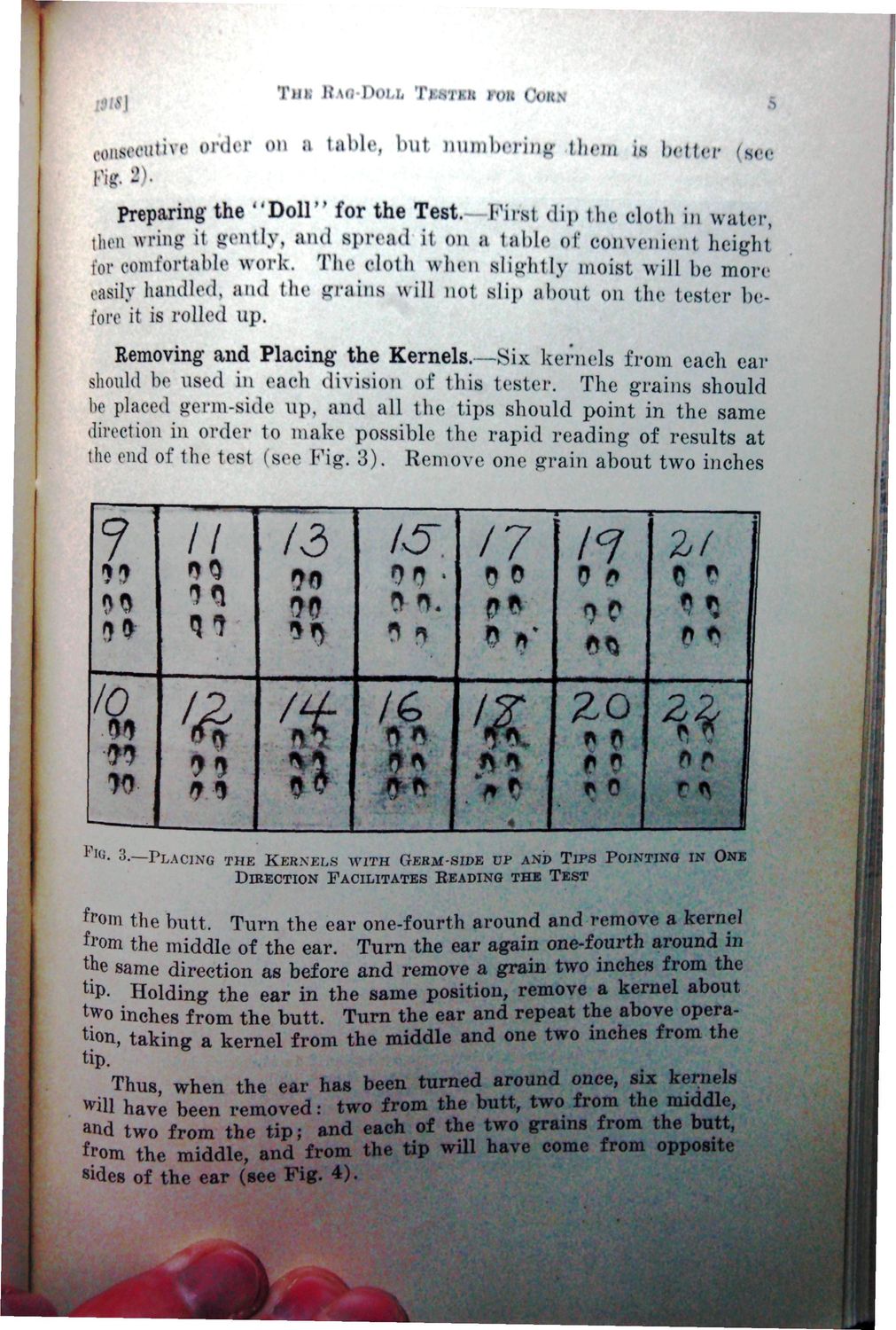| |
| |
Caption: War Publications - WWI Compilation 1923 - Article 34
This is a reduced-resolution page image for fast online browsing.

EXTRACTED TEXT FROM PAGE:
' ! • im\ 1 I'Oll I'm. I \ii Moil. Ti.vi C iou COK.N soi'Ulivi order on a table, but numbering them is better (•€€ Kiir. 2^ Preparing the "Doll" for the Test. First dip the cloth in water, then wring it jriMilly, and spread it on a table of convenient height for comfortable work. The cloth when slightly moist will be more easily handled, and the grains will not slip about on the tester before it is rolled up. Removing and Placing the Kernels,—Six kernels from each ear should he used in each division of this tester. The grains should he placed irerm-side up% a l K i a |i tiH> t j ] ) S s i 10 ulcl point in the same direction in order to make possible the rapid reading of results at the end of the test (see Fig. 3). Remove one grain about two inches PIG. 3.—PLACING T H E K E R N E L S W I T H GERM-SIDE U P AND T I P S POINTING IN O N E DIRECTION FACILITATES BEADING THE T E S T from the butt. Turn the ear one-fourth around and remove a kernel fr om the middle of the ear. Turn the ear again one-fourth around in the same direction as before and remove a grain two inches from the tip. Holding the ear in the same position, remove a kernel about two inches from the butt. Turn the ear and repeat the above operation, taking a kernel from the middle and one two inches from the tip. Thus, when the ear has been turned around once, six kernels will have been removed: two from the butt, two from the middle, and two from the tip; and each of the two grains from the butt, from the middle, and from the tip will have come from opposite sides of the ear (see Fig. 4).
| |